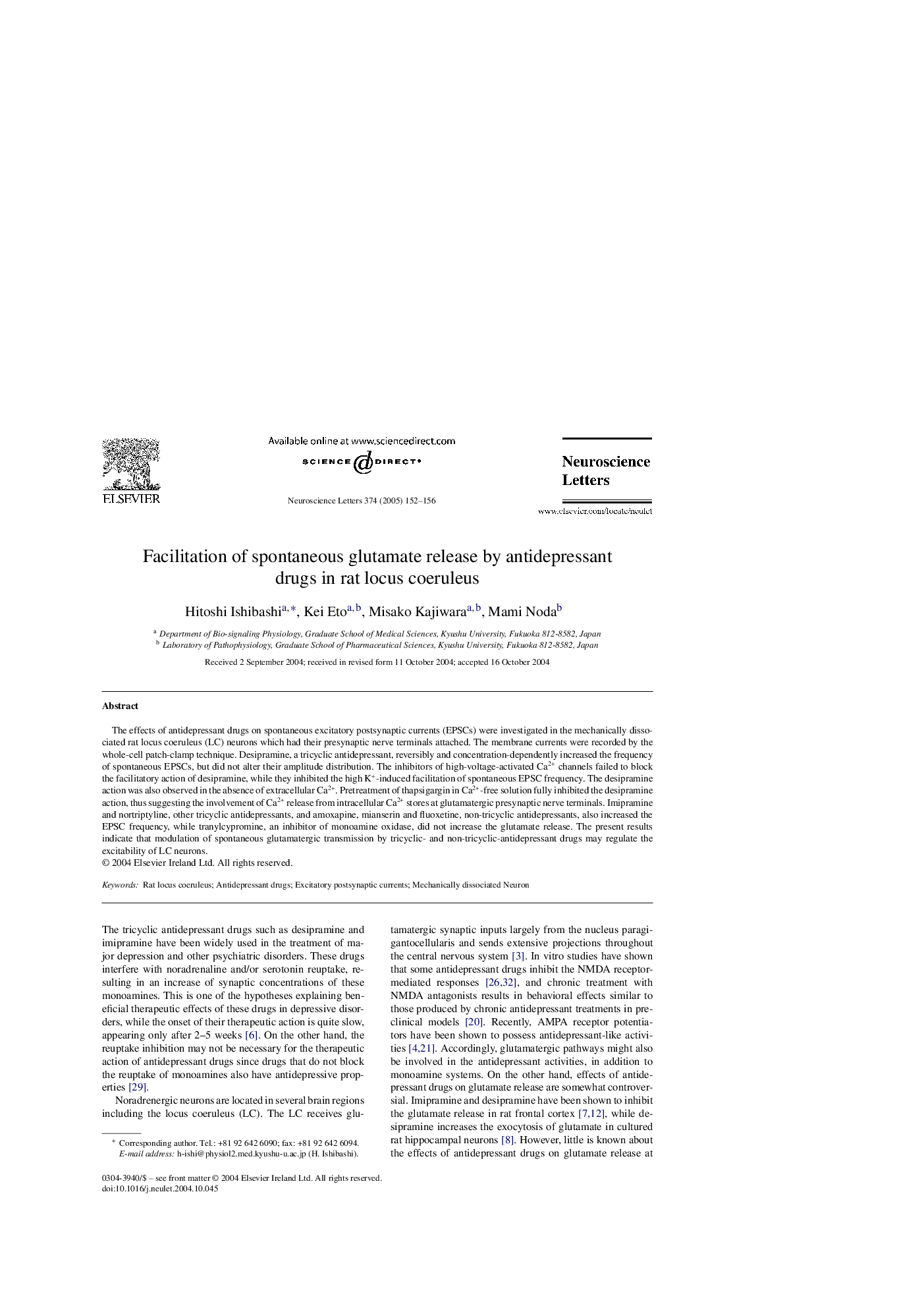| Article ID | Journal | Published Year | Pages | File Type |
|---|---|---|---|---|
| 9429816 | Neuroscience Letters | 2005 | 5 Pages |
Abstract
The effects of antidepressant drugs on spontaneous excitatory postsynaptic currents (EPSCs) were investigated in the mechanically dissociated rat locus coeruleus (LC) neurons which had their presynaptic nerve terminals attached. The membrane currents were recorded by the whole-cell patch-clamp technique. Desipramine, a tricyclic antidepressant, reversibly and concentration-dependently increased the frequency of spontaneous EPSCs, but did not alter their amplitude distribution. The inhibitors of high-voltage-activated Ca2+ channels failed to block the facilitatory action of desipramine, while they inhibited the high K+-induced facilitation of spontaneous EPSC frequency. The desipramine action was also observed in the absence of extracellular Ca2+. Pretreatment of thapsigargin in Ca2+-free solution fully inhibited the desipramine action, thus suggesting the involvement of Ca2+ release from intracellular Ca2+ stores at glutamatergic presynaptic nerve terminals. Imipramine and nortriptyline, other tricyclic antidepressants, and amoxapine, mianserin and fluoxetine, non-tricyclic antidepressants, also increased the EPSC frequency, while tranylcypromine, an inhibitor of monoamine oxidase, did not increase the glutamate release. The present results indicate that modulation of spontaneous glutamatergic transmission by tricyclic- and non-tricyclic-antidepressant drugs may regulate the excitability of LC neurons.
Related Topics
Life Sciences
Neuroscience
Neuroscience (General)
Authors
Hitoshi Ishibashi, Kei Eto, Misako Kajiwara, Mami Noda,
